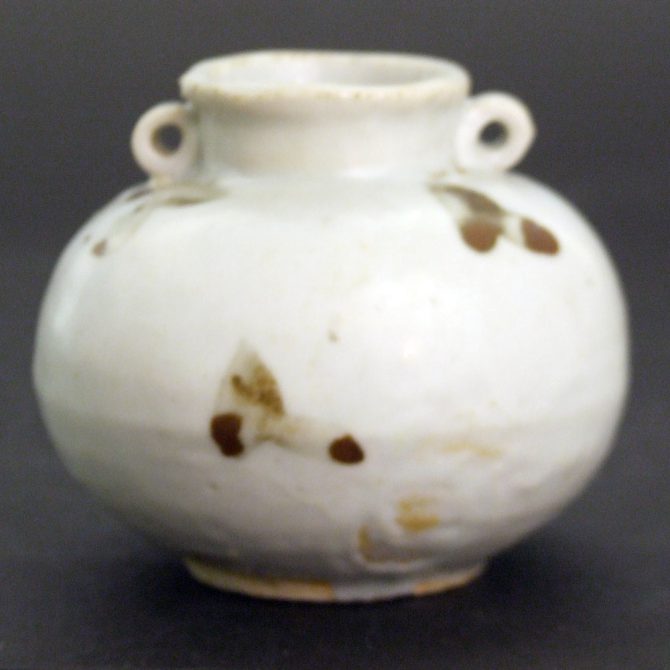
YUAN DYNASTY 1279 – 1368. Qingbai Porcelain
A Yuan Qingbai Porcelain Jarlet. The Globular Form with Two Small Lug Handles and a Flat Unglazed Base. Decorated with Iron-Oxide Splashes, Some of Which are Rather Feint.
Qingbai Jarlets like the present example were widely exported to South East Asia, particularly Indonesia. Yuan Blue and White Porcelain and celadon were also part of this important export trade to Indonesia.
SOLD
- Condition
- Perfect.
- Size
- Height : 5.4 cm (2 1/4 inches).
- Provenance
- The Edward Wrangham Collection of Japanese and Chinese Ceramics and Works of Art. Edward Wrangham (1928-2009). Ted Wrangham was born in London and educated at Eaton, then later at Magdalene College Cambridge. In 1957 he took up farming in Northumberland and championed environmental causes in the north east of England. His grandfather was the esteemed collector Stephen Winkworth, his uncle William (Billy) Winkworth, another important collector of Chinese Ceramics. The seeds of his interest were sown early, Stephen Winkworth presented him with a netsuke when he was only eight years old. His interest in Japanese and Chinese art led him to collect, he purchased his collection from a range of sources, including many pieces from his grandfather's (Stephen Winkworth) collection when they were sold by Sotheby's in the early 1970's. While his taste was eclectic it was highly educated, the cultural history of the objects in his collection was something that fascinated him. He wrote extensively about oriental art, including the private printing of an important reference book in 1995, The Index of Inro Artists.
- Stock number
- 21097
Information
The earliest known qingbai wares were produced in Jingdezhen in Jiangxi province around the late 10th century and are characterized by faint pale-blue glazes on low, wide forms. Qingbai continued to be enormously popular and highly produced throughout the Song dynasty (960-1279) and was prevalent in the Yuan dynasty (1279-1368), but slackened during the Ming dynasty (1368-1644) until being replaced by tianbai, ‘sweet white’ ware. The initial forms of qingbai were simple bowls and dishes, but by the mid-Northern Song the forms had advanced to include a wide variety of objects used for daily life such as ewers, boxes, incense burners, granary models, vases, jars, sculptures, cups, cupstands, water droppers, lamps, grave wares, and tools for writing and painting. The precedent for the majority of these forms is found in earlier metalwork and lacquer and Rawson has suggested that the imitation of silver was the primary force behind the production of white wares, including qingbai. See our 'History' section for more information about Song Porcelain and Stoneware by Mindy M. McDonald.